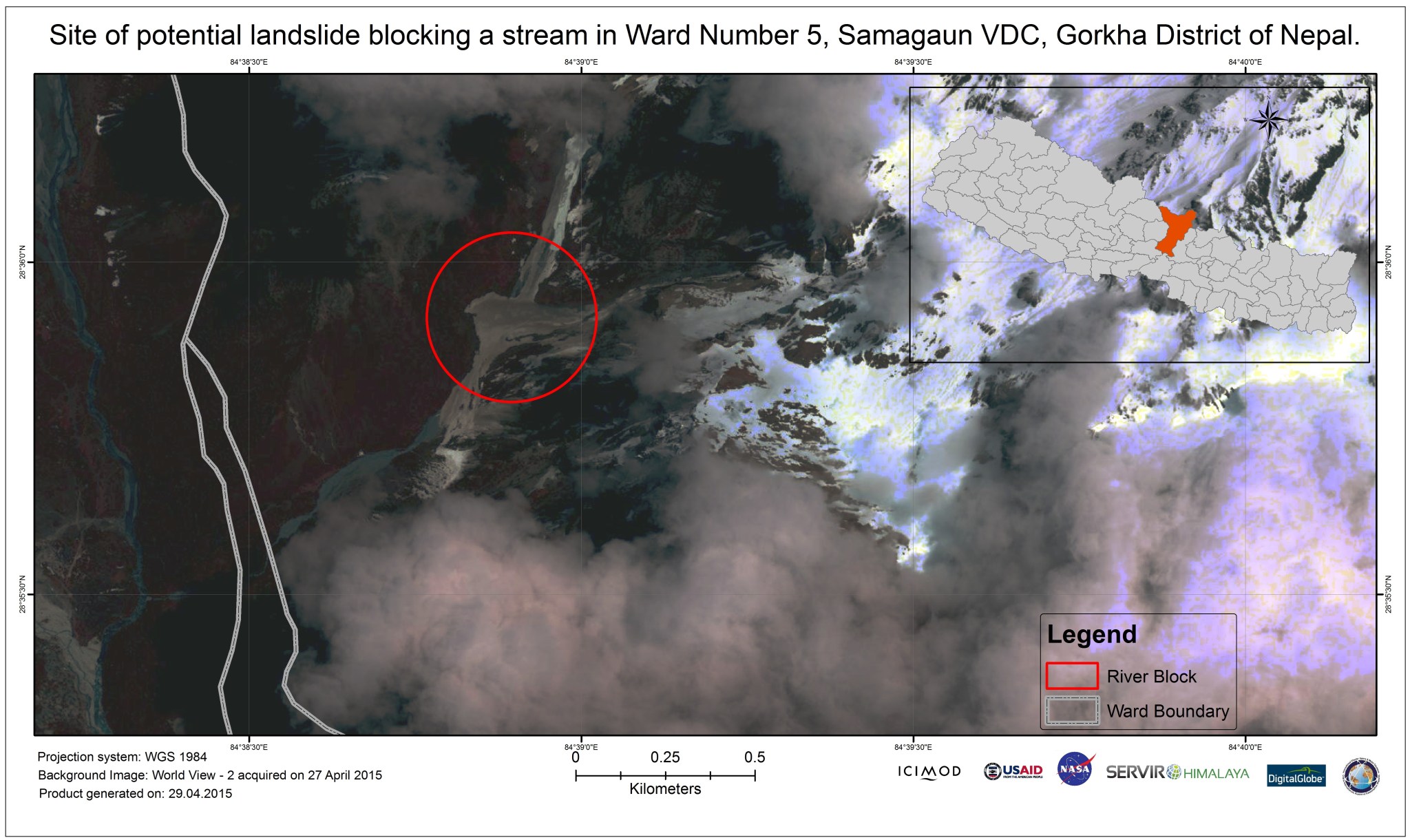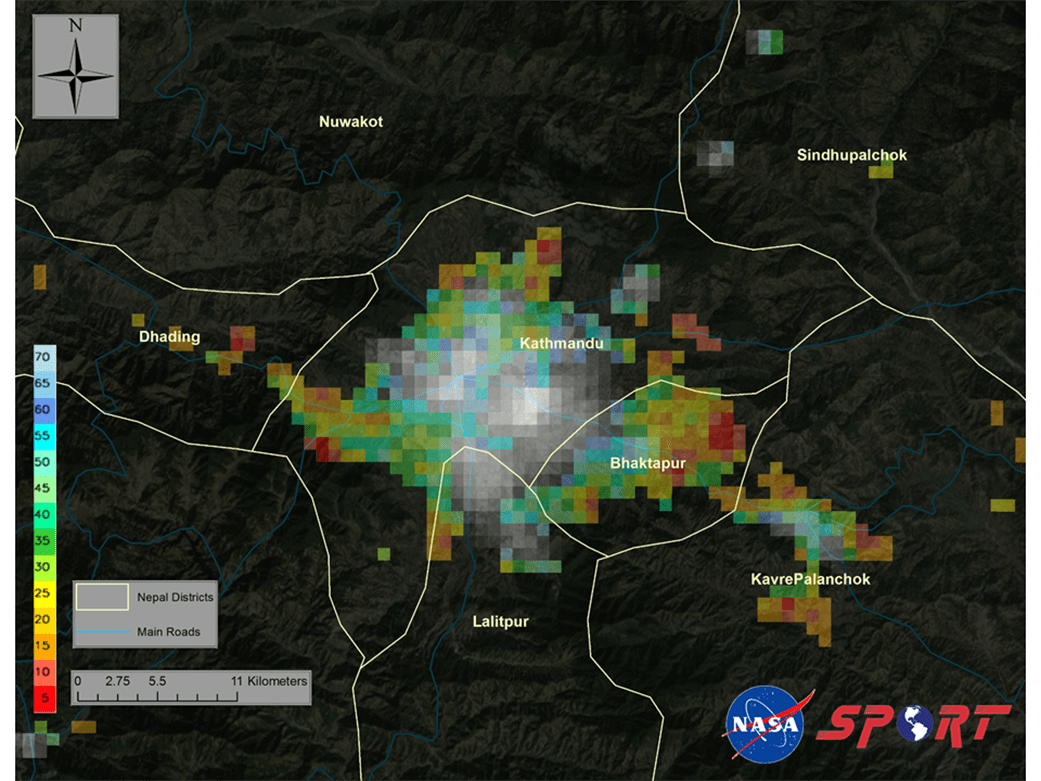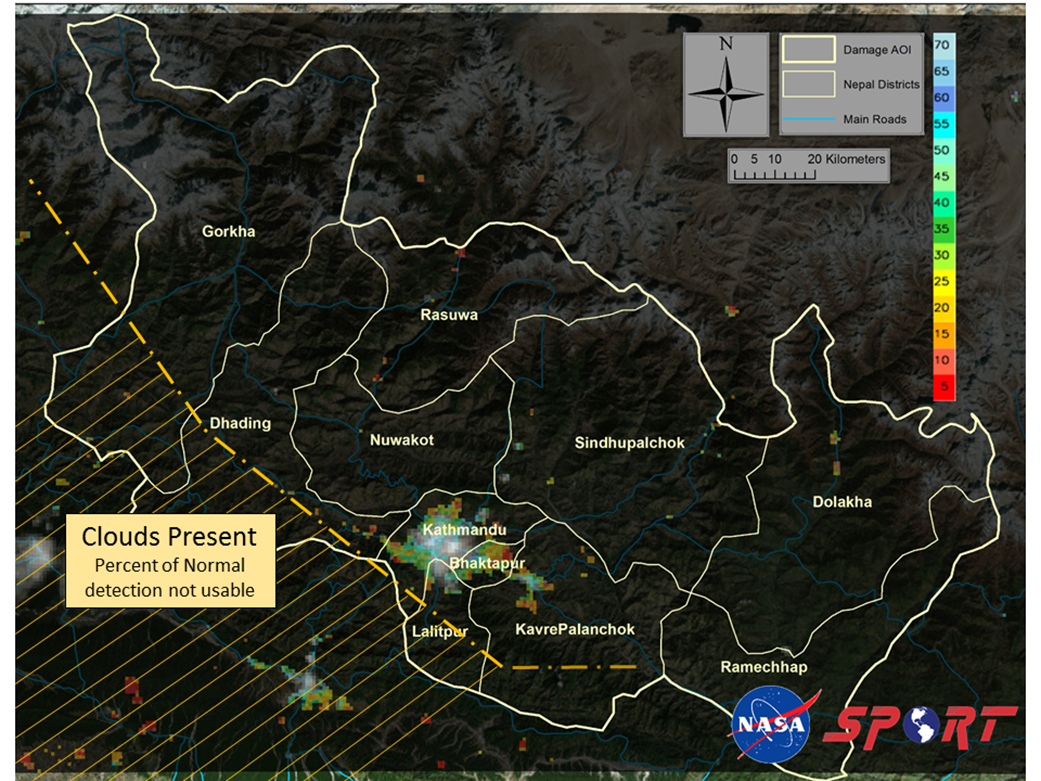In This Week’s Star
- › Executive Changes Announced for Marshall, Michoud and Space Launch System Program
- › Pegasus Barge Work Continues on the Bayou
- › NASA’s New Horizons Detects Surface Features, Possible Polar Cap on Pluto
- › NASA/USAID SERVIR Initiative Responds to Earthquake in Nepal
- › SPoRT Satellite Imagery Aids in Nepal Earthquake Recovery
- › NASA Engineers EmpowHER Women at Summit
- › New Images from New Horizons Spacecraft Featured On ‘This Week @NASA’
- › Obituaries
Executive Changes Announced for Marshall, Michoud and Space Launch System Program
A number of executive leadership changes affecting NASA’s Marshall Space Flight Center, the Michoud Assembly Facility and the Space Launch System Program have been announced.
Tony Lavoie, manager of the Stages Office of the Space Launch System program, is retiring from NASA after more than 32 years of service.
Steve Doering has been reassigned from the position of director of Marshall’s Office of Center Operations, to become manager of the SLS Stages Office.
Roy Malone is reassigned from the position of director of Michoud, to director of the Office of Center Operations at Marshall.
Bobby Watkins has been reassigned from the position of director of Marshall’s Office of Strategic Analysis and Communications, to become director of Michoud.
Johnny Stephenson is reassigned from the position of Marshall’s deputy director of OSAC to director of OSAC.
Lavoie began employment with NASA in October of 1982 in the Systems Analysis and Integration Lab at Marshall. His career includes service as program manager for the Chandra X-Ray Observatory, as deputy director and director of the Flight Projects Directorate, director of the Space Systems Programs and Projects Office, project manager for the Robotic Lunar Exploration Program-2, deputy director for the Space Systems Department in Engineering and, in late 2010, SLS Stages manager.
As manager of the SLS Stages Office, Doering will oversee the design and development of the 200-foot core stage, the structural backbone of the rocket. He has served in executive positions of increasing scope and responsibility and has extensive experience in program and project management, resources management and strategic alignment in support of NASA’s human space flight programs, including the space shuttle and International Space Station. His career includes service as deputy manager and manager of the Extravehicular Activity Office at Johnson Space Center, associate program manager for the Constellation Program, director of Michoud and, since 2012, director of the Office of Center Operations at Marshall.
As director of the Marshall Office of Center Operations, Malone will be responsible for the organization that provides comprehensive, integrated and customer-driven institutional services to enable Marshall and the agency to achieve mission success. These activities encompass a broad range of diverse products and services, including the design, operation and maintenance of the total facility. Malone has extensive experience in strategic planning, technical and institutional expertise, program and project support, systems engineering, and safety and quality engineering. He began his NASA career in 1989 as a senior technical adviser in the Safety and Mission Assurance Shuttle Integration Office. He has served as the Marshall Center’s ISO 9000 audit manager, as manager of the Logistics Services Department in the Marshall Center Operations Directorate, deputy director and director of the Safety and Mission Assurance Directorate, manager of the Shuttle-Ares Transition Office and, since 2012, as director of Michoud.
As director of Michoud, Watkins will manage one of the largest and most unique multi-tenant manufacturing sites in the world. Michoud provides vital support to NASA exploration and discovery missions, including the SLS and Orion spacecraft. Watkins has served in multiple executive positions at Marshall, Johnson, and at NASA Headquarters where he gained significant experience in leadership, resources management, and program and project management. In both 2009 and 2013, he was a member of NASA’s final Astronaut Selection Board. Immediately prior to his new position, he served on a detail assignment as director of the Legislative Liaison Division at NASA Headquarters. His NASA career began in 1986 and his service includes selection to NASA’s Professional Development Program, leadership roles in the Space Shuttle Program at Johnson, management of the Space Shuttle Planning and Evaluation Office at Headquarters, chief engineer at Johnson and, in 2010, director of OSAC at Marshall.
As director of OSAC, Stephenson will be responsible for the organization charged with communicating the center’s goals and successes to the Marshall workforce, NASA leadership and Marshall’s stakeholders. The office also provides center-wide independent technical, schedule, management, and resource evaluations and estimates of Marshall programs, projects and mission support activities. Stephenson began working for NASA as a co-op student in Marshall’s Engineering Directorate in 1986, and joined the agency full-time in 1987. His career spans a wide range of leadership and management positions, including manager of the Business and Integration Office in Marshall’s Engineering Directorate; director of Organizational Readiness for the Office of Program Analysis and Evaluation at NASA Headquarters; and manager of Marshall’s Performance and Capabilities Management Office.
Pegasus Barge Work Continues on the Bayou
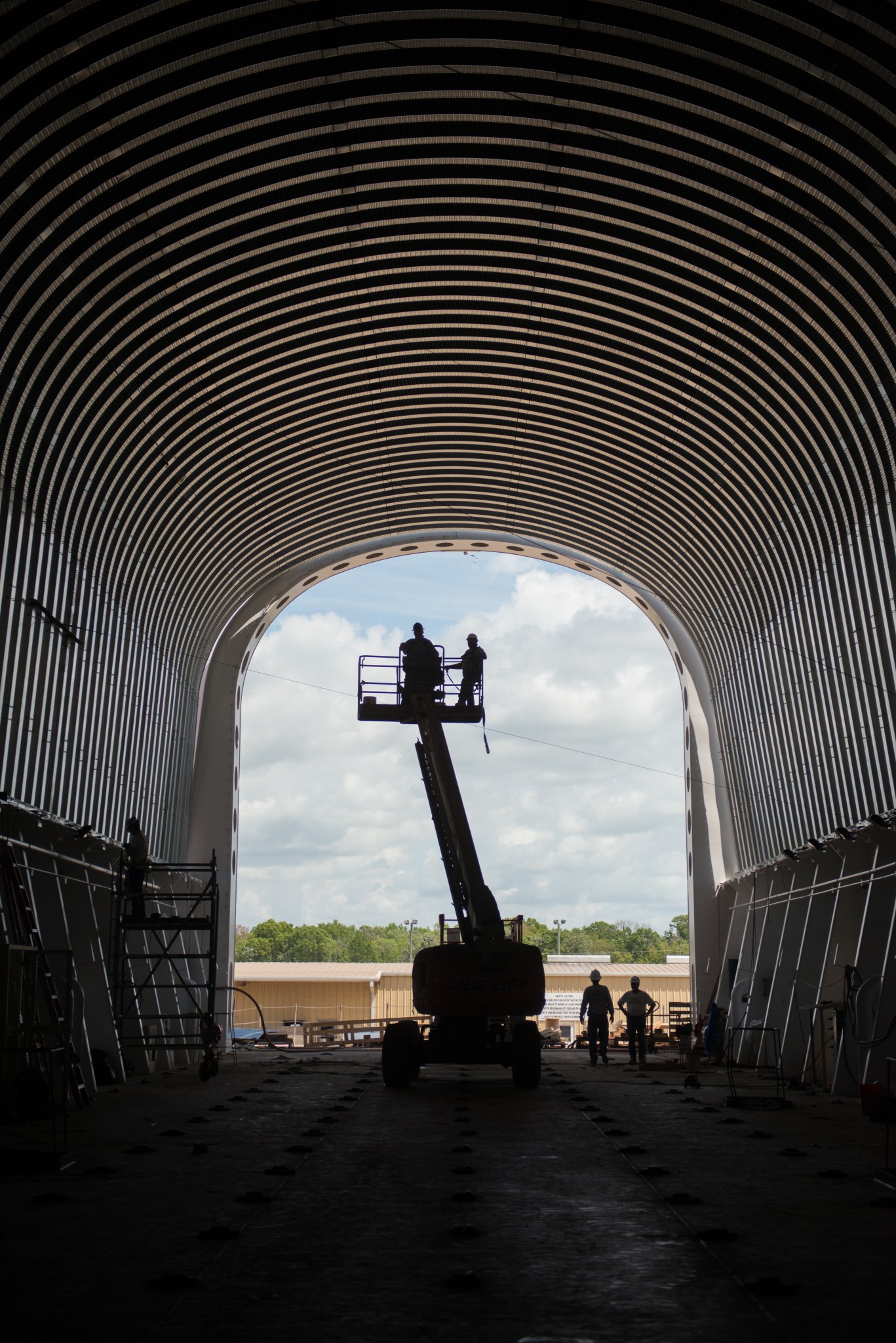
Crews at Conrad Shipyard in Morgan City, Louisiana, complete a 250-foot-long metal canopy for NASA’s Pegasus barge. The vessel will be used to transport the massive core stage of NASA’s new rocket, the Space Launch System. The core stage, towering more than 200 feet tall with a diameter of 27.6 feet, will store cryogenic liquid hydrogen and liquid oxygen that will feed the vehicle’s RS-25 engines. The final modifications, testing, closeout and delivery of Pegasus are scheduled for completion this summer. NASA’s Marshall Space Flight Center manages the SLS Program for the agency. For more on Pegasus, click here. (NASA/Michoud/Steven Seipel)
NASA’s New Horizons Detects Surface Features, Possible Polar Cap on Pluto
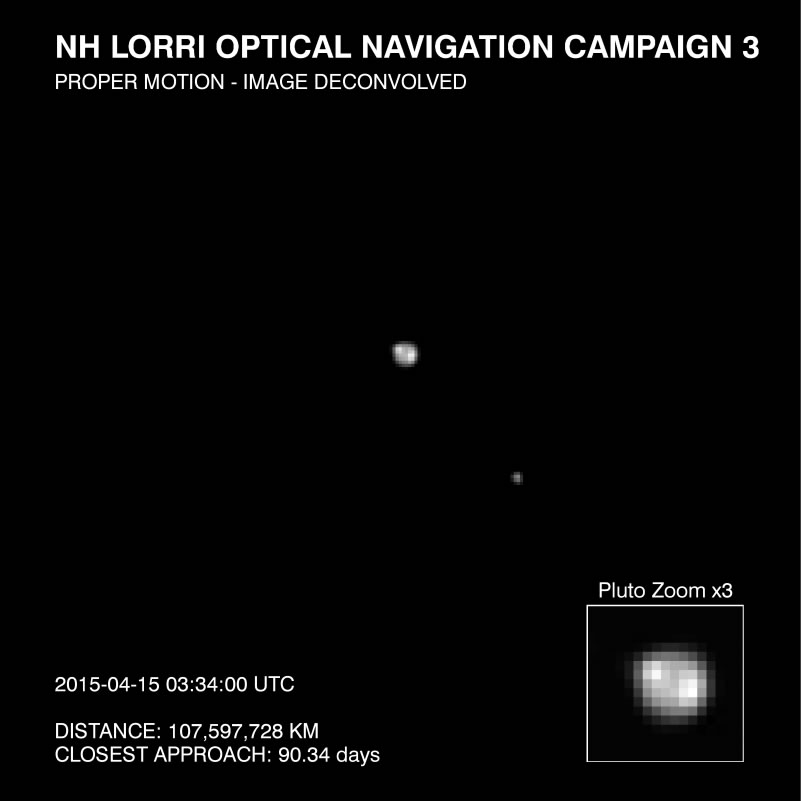
For the first time, images from NASA’s New Horizons spacecraft are revealing bright and dark regions on the surface of faraway Pluto — the primary target of the New Horizons close flyby in mid-July.
The images were captured in early to mid-April from within 70 million miles (113 million kilometers), using the telescopic Long-Range Reconnaissance Imager camera on New Horizons. A technique called image deconvolution sharpens the raw, unprocessed images beamed back to Earth. New Horizons scientists interpreted the data to reveal the dwarf planet has broad surface markings — some bright, some dark — including a bright area at one pole that may be a polar cap.
“As we approach the Pluto system, we are starting to see intriguing features such as a bright region near Pluto’s visible pole, starting the great scientific adventure to understand this enigmatic celestial object,” says John Grunsfeld, associate administrator for NASA’s Science Mission Directorate. “As we get closer, the excitement is building in our quest to unravel the mysteries of Pluto using data from New Horizons.”
Also captured in the images is Pluto’s largest moon, Charon, rotating in its 6.4-day-long orbit. The exposure times used to create this image set — a tenth of a second — were too short for the camera to detect Pluto’s four much smaller and fainter moons.
Since it was discovered in 1930, Pluto has remained an enigma. It orbits our sun more than 3 billion miles (about 5 billion kilometers) from Earth, and researchers have struggled to discern any details about its surface. These latest New Horizons images allow the mission science team to detect clear differences in brightness across Pluto’s surface as it rotates.
“After traveling more than nine years through space, it’s stunning to see Pluto, literally a dot of light as seen from Earth, becoming a real place right before our eyes,” said Alan Stern, New Horizons principal investigator at Southwest Research Institute in Boulder, Colorado. “These incredible images are the first in which we can begin to see detail on Pluto, and they are already showing us that Pluto has a complex surface.”
The images the spacecraft returns will dramatically improve as New Horizons speeds closer to its July rendezvous with Pluto.
“We can only imagine what surprises will be revealed when New Horizons passes approximately 7,800 miles (12,500 kilometers) above Pluto’s surface this summer,” said Hal Weaver, the mission’s project scientist at the Johns Hopkins University Applied Physics Laboratory in Laurel, Maryland.
Johns Hopkins University Applied Physics Laboratory designed, built and operates the New Horizons spacecraft, and manages the mission for NASA’s Science Mission Directorate. The Southwest Research Institute leads the science team, payload operations and encounter science planning. New Horizons is part of the New Frontiers Program managed by NASA’s Marshall Space Flight Center.
To view images from New Horizons and learn more about the mission, visit NASA’s New Horizons webpage.
NASA/USAID SERVIR Initiative Responds to Earthquake in Nepal
By Dauna Coulter
SERVIR, a joint development initiative of NASA and the United States Agency for International Development, is working to help Nepal recover from the earthquake that struck on April 25.
SERVIR partners with leading regional organizations around the globe to help developing countries use information provided by Earth-observing satellites and geospatial technologies for managing climate risks and land use. SERVIR has hubs in East Africa, the Hindu Kush-Himalayas, and the lower Mekong. SERVIR-Himalaya is based in Kathmandu — near ground zero for earthquake devastation.
With their country reeling in the aftermath of a devastating earthquake, the International Center for Integrated Mountain Development which hosts the SERVIR-Himalaya hub in Kathmandu, is working around the clock to coordinate geospatial and remote sensing information to support disaster response. An office has been set up in the Ministry of Home Affairs and at ICIMOD, and teams are operating 24/7 to map the disaster-struck region for the government of Nepal and other organizations striving to save lives and help those in need.
ICIMOD is coordinating with partners and space agencies worldwide to collect and analyze data and imagery, and to provide targeted information to the government of Nepal, USAID-Nepal and relief agencies. An earthquake information page has been set up at www.icimod.org/nepalearthquake2015 as an efficient platform for finding and sharing information.
“Thankfully, the team at ICIMOD is physically OK and able to aid in disaster response efforts,” says Dan Irwin, NASA SERVIR project director at NASA’s Marshall Space Flight Center. “Unfortunately, this is a tragedy that will forever change Nepal. It’s so sad to see the loss of lives and livelihoods, the loss of many buildings and infrastructure, and the damage to world-renowned cultural gems like Bhaktapur. It’s heartbreaking for our friends and colleagues, and we’re committed to do all we can to help them access NASA and other critical satellite images and products that can aid emergency response at this challenging time.”
ICIMOD is focused on getting information about many hard-hit remote mountain areas and villages, including the districts of Rasuwa, Nuwakot, Kavre, Gorkha and Sindhupalchowk — areas where ICIMOD routinely works. The SERVIR Coordination Office team in Huntsville; four SERVIR-Himalaya team members currently in Arusha, Tanzania; members of the SERVIR Applied Sciences Team; the NASA SPoRT team; the University of Arizona; University of Alabama in Huntsville Earth System Science students; colleagues at NASA’s Goddard Space Flight Center and Jet Propulsion Laboratory; managers of the NASA Headquarters Earth Science Division hazards and disasters program; and others are generating and processing products to support ICIMOD.
The group is identifying and tasking sites for NASA satellites to image, collecting these images, as well as images and data from other U.S. government agencies and from private/commercial organizations, then processing and compressing the data into files that can be received on location in Nepal, where bandwidth is currently limited.
ICIMOD/SERVIR-Himalaya is printing the images and providing them to Nepal government agencies, including the Ministry of Home Affairs, to help target recovery efforts and speed assistance.
These photos can help direct rapid response, pinpoint landslides and other hazards occurring within the disrupted landscape, assess the extent of damage and more.
For more information about SERVIR, visit NASA’s SERVIR page or www.servirglobal.net.
Coulter, an ASRC Federal/Analytical Services employee, supports SERVIR.
SPoRT Satellite Imagery Aids in Nepal Earthquake Recovery
In the wake of the April 25 earthquake in Nepal, NASA’s Short-term Prediction Research and Transition project at NASA’s Marshall Space Flight Center has developed satellite imagery to assist decision makers in post-disaster analysis and assessment. The image shows a decrease in emitted light over the city of Kathmandu and surrounding areas as detected by the Visible Infrared Imaging Radiometer Suite “Day-Night Band” sensor aboard the NASA/NOAA Suomi National Polar-Orbiting Partnership satellite, derived from a comparison of pre-earthquake (April 22) and post-earthquake (April 26) imagery. The warm colors (red–yellow) indicate the largest reduced light emissions in the post-event image, possibly due to damage to electrical infrastructure. Towns and suburban areas around Kathmandu show the larger percentage of reduced light emission. Input satellite data were obtained in collaboration with the NASA Suomi NPP Science Investigator-led Processing System activities at the University of Wisconsin. This information can help relief operations determine areas that may be affected by electrical outages. (NASA/NOAA)
Similarly, this image shows a decrease in emitted light over Nepal in areas affected by the April 25 earthquake. The outline is of the domain of 11 districts in the immediate region of the earthquake with each of the districts names bolded. Blue lines are the major roadways, and thin lines are the district boundaries. The crosshatch yellow line delineates where clouds are present in both the thermal and shortwave infrared imagery. (NASA/NOAA)
NASA Engineers EmpowHER Women at Summit
By Megan Davidson

Two NASA engineers took time to “empowher” more than 100 female high school and college students to pursue science, technology, engineering and math (STEM) careers April 25 at the Powherful Summit at Dillard University in New Orleans.
Renee Horton, Ph.D, a native of Baton Rouge, Louisiana, and a Space Launch System lead metallic and weld engineer at NASA’s Michoud Assembly Facility; and Virginia Cook Tickles, Ph.D, a native of New Orleans and a cost analysis engineer in NASA’s Marshall Space Flight Center’s Office of Strategic Analysis & Communications, were part of the “Cool Careers in STEM” panel at the event.
The panel was moderated by Soledad O’Brien, cofounder of the Starfish Foundation and chief executive officer of Starfish Media Group. The Starfish Foundation helps young women reach their highest potential in education by providing financial assistance and mentoring opportunities.
The Marshall Speakers Bureau coordinated the NASA speaking engagements for the summit, which is focused on education, professional and personal development of the next generation of women.
NASA’s SLS will be the most powerful rocket ever built for deep space missions, including to an asteroid and ultimately to Mars. Marshall manages the SLS Program for the agency, and the SLS core stage is being built at Michoud. The core stage, towering more than 200 feet, will store cryogenic liquid hydrogen and liquid oxygen that will feed the vehicle’s RS-25 engines.
Davidson, an ASRC Federal/Analytical Services employee, supports the Office of Strategic Analysis & Communications.
New Images from New Horizons Spacecraft Featured On ‘This Week @NASA’
New images of the dwarf planet Pluto — taken by NASA’s New Horizons spacecraft — were featured in the latest edition of “This Week @NASA,” a weekly video program broadcast nationwide on NASA-TV and posted online.
For the first time, images are revealing bright and dark regions on the surface of faraway Pluto – the primary target of the spacecraft’s upcoming close flyby on July 14. The images were captured in early to mid-April from within 70 million miles using the telescopic Long-Range Reconnaissance Imager camera onboard the spacecraft. Mission scientists interpreted the data to reveal the dwarf planet has broad surface markings – some bright, some dark – including a bright area at one pole that may be a polar cap. The New Horizons project is one of many projects within NASA’s New Frontiers program and is managed by NASA’s Marshall Space Flight Center.
View this and previous episodes at “This Week @NASA” or at https://www.youtube.com/user/NASAtelevision.
Obituaries
Jennie C. Christopher, 94, of Athens, Alabama, died Nov. 8. She retired from the Marshall Center in 1971 as a technical editor. She is survived by her husband, James Christopher.
Donald R. Saxton, 80, of Huntsville, died Dec. 20. He retired from the Marshall Center in 1990 as an aerospace engineer. He is survived by his wife, Margaret Saxton.
Jesse N. Bradley, 93, of Huntsville, died Feb. 6. He retired from the Marshall Center in 1978 as an aerospace engineer. He is survived by his wife, Jean Bradley.
Harry T. Staples, 86, of Huntsville, died Feb. 12. He retired from the Marshall Center in 1996 as a program analyst. He is survived by his wife, Evelyn Staples.
Murl H. Newberry, 82, of Huntsville, died April 12. He retired from the Marshall Center in 1981 as an electronics engineer.
Billy R. Padgett, 75, of Guntersville, Alabama, died April 19. He retired from the Marshall Center in 1983 as a program analyst. He is survived by his wife, Patricia Padgett.
Charles F. Thornton, 80, of Decatur, Alabama, died April 19. He retired from the Marshall Center in 1981 as a crane operator. He is survived by his wife, Bonnie Thornton.
Stanley M. Plattenburg, 79, of Huntsville, died April 29. He retired from the Marshall Center in 1990 as an aerospace engineer. He is survived by his wife, Shirley Plattenburg.



























